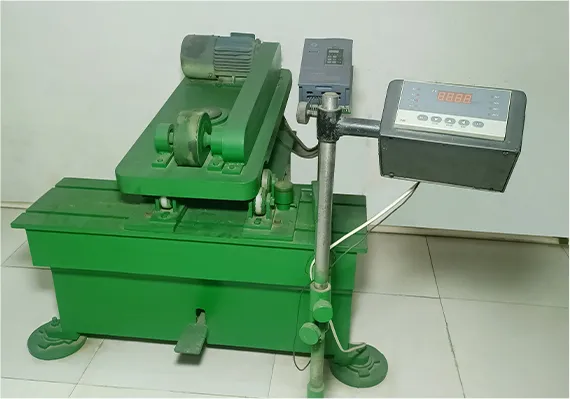 Afrikaans
Afrikaans  Albanian
Albanian  Amharic
Amharic  Arabic
Arabic  Armenian
Armenian  Azerbaijani
Azerbaijani  Basque
Basque  Belarusian
Belarusian  Bengali
Bengali  Bosnian
Bosnian  Bulgarian
Bulgarian  Catalan
Catalan  Cebuano
Cebuano  Corsican
Corsican  Croatian
Croatian  Czech
Czech  Danish
Danish  Dutch
Dutch  English
English  Esperanto
Esperanto  Estonian
Estonian  Finnish
Finnish  French
French  Frisian
Frisian  Galician
Galician  Georgian
Georgian  German
German  Greek
Greek  Gujarati
Gujarati  Haitian Creole
Haitian Creole  hausa
hausa  hawaiian
hawaiian  Hebrew
Hebrew  Hindi
Hindi  Miao
Miao  Hungarian
Hungarian  Icelandic
Icelandic  igbo
igbo  Indonesian
Indonesian  irish
irish  Italian
Italian  Japanese
Japanese  Javanese
Javanese  Kannada
Kannada  kazakh
kazakh  Khmer
Khmer  Rwandese
Rwandese  Korean
Korean  Kurdish
Kurdish  Kyrgyz
Kyrgyz  Lao
Lao  Latin
Latin  Latvian
Latvian  Lithuanian
Lithuanian  Luxembourgish
Luxembourgish  Macedonian
Macedonian  Malgashi
Malgashi  Malay
Malay  Malayalam
Malayalam  Maltese
Maltese  Maori
Maori  Marathi
Marathi  Mongolian
Mongolian  Myanmar
Myanmar  Nepali
Nepali  Norwegian
Norwegian  Norwegian
Norwegian  Occitan
Occitan  Pashto
Pashto  Persian
Persian  Polish
Polish  Portuguese
Portuguese  Punjabi
Punjabi  Romanian
Romanian  Russian
Russian  Samoan
Samoan  Scottish Gaelic
Scottish Gaelic  Serbian
Serbian  Sesotho
Sesotho  Shona
Shona  Sindhi
Sindhi  Sinhala
Sinhala  Slovak
Slovak  Slovenian
Slovenian  Somali
Somali  Spanish
Spanish  Sundanese
Sundanese  Swahili
Swahili  Swedish
Swedish  Tagalog
Tagalog  Tajik
Tajik  Tamil
Tamil  Tatar
Tatar  Telugu
Telugu  Thai
Thai  Turkish
Turkish  Turkmen
Turkmen  Ukrainian
Ukrainian  Urdu
Urdu  Uighur
Uighur  Uzbek
Uzbek  Vietnamese
Vietnamese  Welsh
Welsh  Bantu
Bantu  Yiddish
Yiddish  Yoruba
Yoruba  Zulu
Zulu hot vulcanized pulley lagging
Understanding Hot Vulcanized Pulley Lagging A Comprehensive Overview
Hot vulcanized pulley lagging is a critical component in various industrial applications, particularly in the mining, bulk handling, and manufacturing sectors. This lagging method enhances the performance of pulleys by providing better grip, protecting the pulley surface, and extending the overall lifespan of the equipment. In this article, we delve into the intricacies of hot vulcanized pulley lagging and its benefits.
What is Hot Vulcanized Lagging?
Hot vulcanization is a process that involves the application of rubber materials to the surface of a pulley using heat and pressure. The rubber is bonded to the metal of the pulley through a chemical reaction that occurs during the vulcanization process, which typically involves the injection of heat and certain chemicals. This method creates a permanent and durable bond that withstands the operational stresses encountered in industrial environments.
Benefits of Hot Vulcanized Pulley Lagging
1. Enhanced Traction One of the primary benefits of hot vulcanized lagging is its ability to provide enhanced traction. The coated surface minimizes slippage between the belt and the pulley, ensuring efficient operation and reducing the risk of belt wear. This is particularly important in applications involving heavy loads and high speeds.
2. Durability and Longevity Hot vulcanized lagging is designed to withstand harsh operating conditions, including extreme temperatures, abrasion, and chemical exposure. The vulcanization process results in a robust surface that resists wear over time, leading to increased durability and a longer lifespan for both the pulley and the conveyor system.
hot vulcanized pulley lagging

3. Reduced Noise and Vibration The rubber lagging serves to dampen vibrations and reduce noise levels during operation. This is not only beneficial for the equipment itself but also contributes to a safer and more comfortable working environment for personnel.
4. Minimized Maintenance Requirements One of the long-term advantages of using hot vulcanized lagging is the reduction in maintenance needs. The strong bond created during the vulcanization process decreases the likelihood of lagging peeling or wearing off, thus minimizing the frequency of replacements or repairs.
5. Customizability Hot vulcanized lagging can be tailored to meet specific operational requirements. Different rubber compounds can be utilized based on the environmental conditions and materials being handled. This customization ensures that the lagging performs optimally in various applications.
Application Areas
Hot vulcanized pulley lagging is extensively used in many sectors. In mining, it plays a vital role in transporting ores and minerals efficiently. In the manufacturing industry, it is common in conveyor systems that handle products in various stages of production. Marine applications also see the benefits of lagging in ensuring that cargo is moved smoothly and efficiently.
Conclusion
In conclusion, hot vulcanized pulley lagging is an essential technology that brings numerous advantages to industrial operations. By improving traction, increasing durability, reducing maintenance, and enhancing operational efficiency, it serves as a vital enhancement for pulleys used in various applications. As industries continue to evolve, the importance of reliable and efficient equipment remains paramount, making hot vulcanized lagging an integral part of modern industrial practices. Whether in mining, manufacturing, or other sectors, the benefits of this specialized lagging method cannot be overlooked.
-
Revolutionizing Conveyor Reliability with Advanced Rubber Lagging PulleysNewsJul.22,2025
-
Powering Precision and Durability with Expert Manufacturers of Conveyor ComponentsNewsJul.22,2025
-
Optimizing Conveyor Systems with Advanced Conveyor AccessoriesNewsJul.22,2025
-
Maximize Conveyor Efficiency with Quality Conveyor Idler PulleysNewsJul.22,2025
-
Future-Proof Your Conveyor System with High-Performance Polyurethane RollerNewsJul.22,2025
-
Driving Efficiency Forward with Quality Idlers and RollersNewsJul.22,2025





























